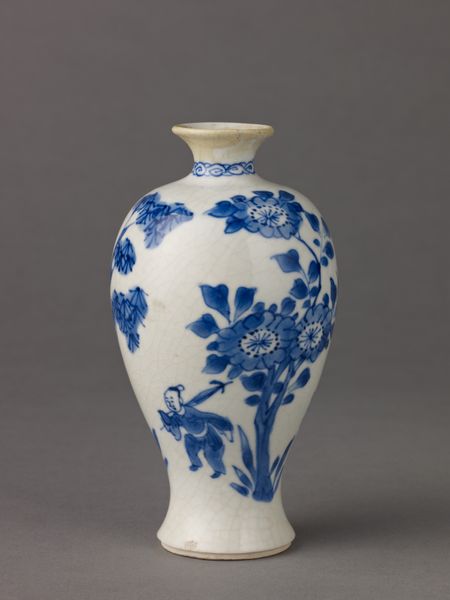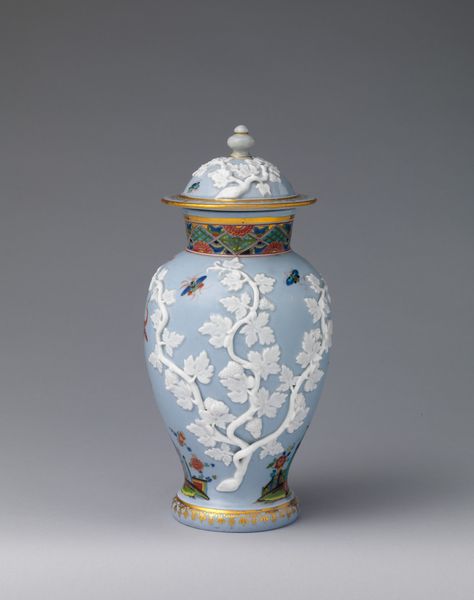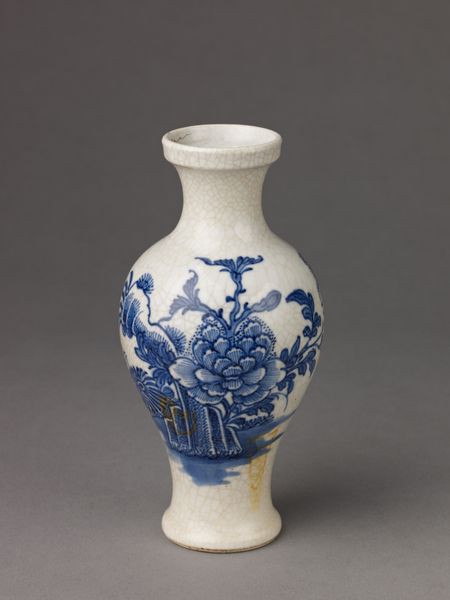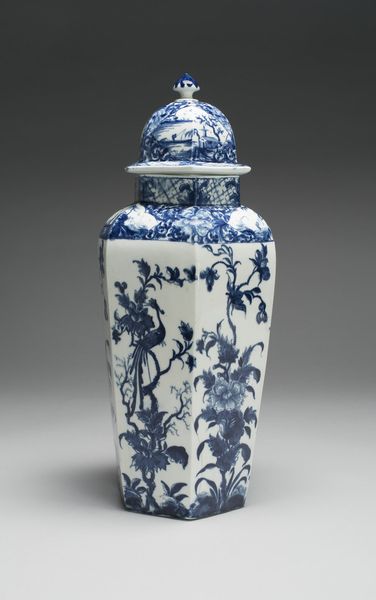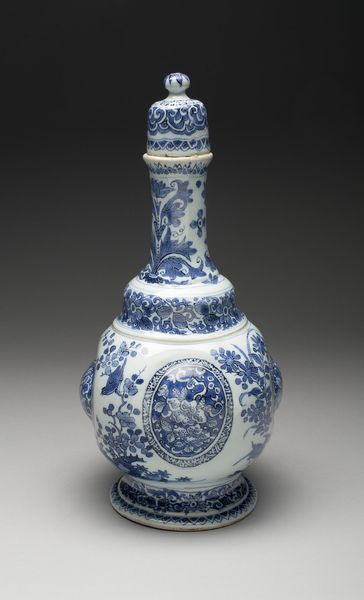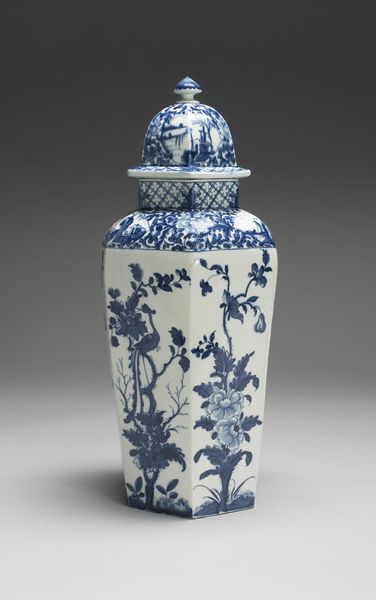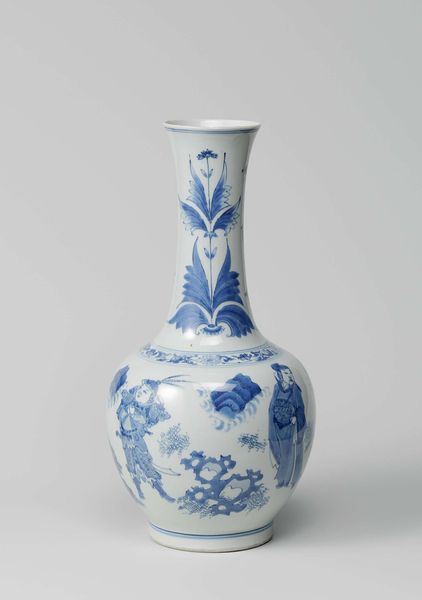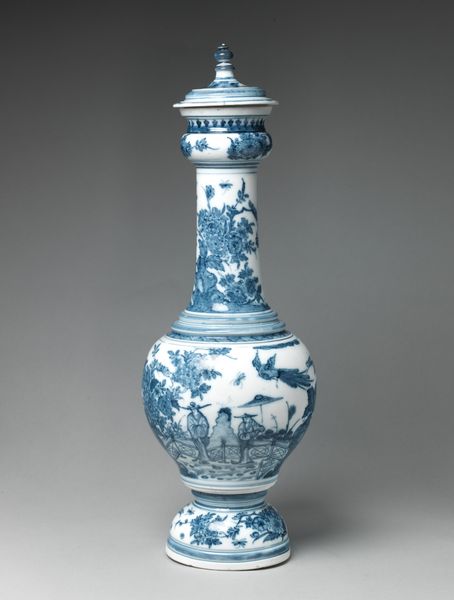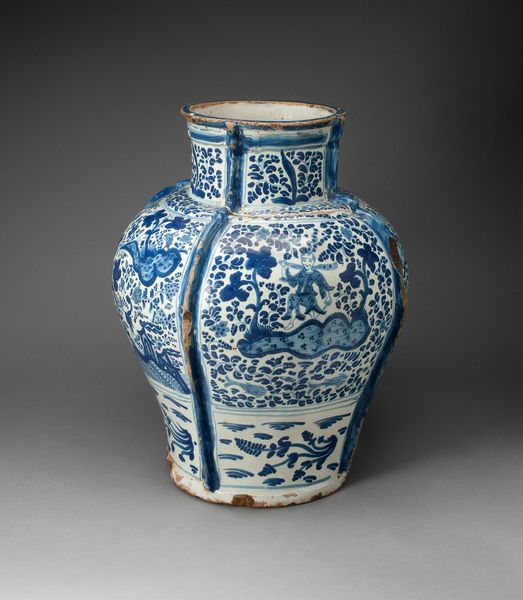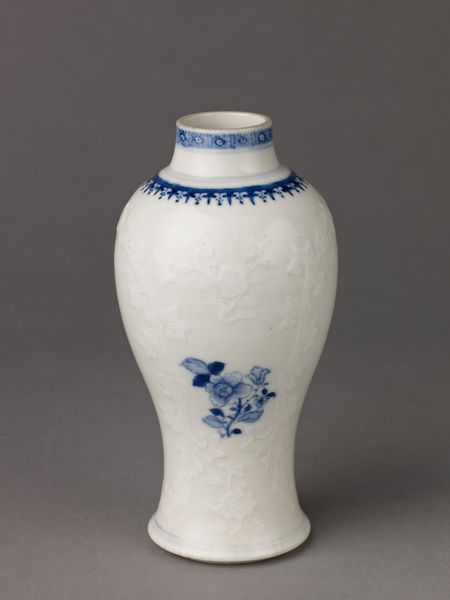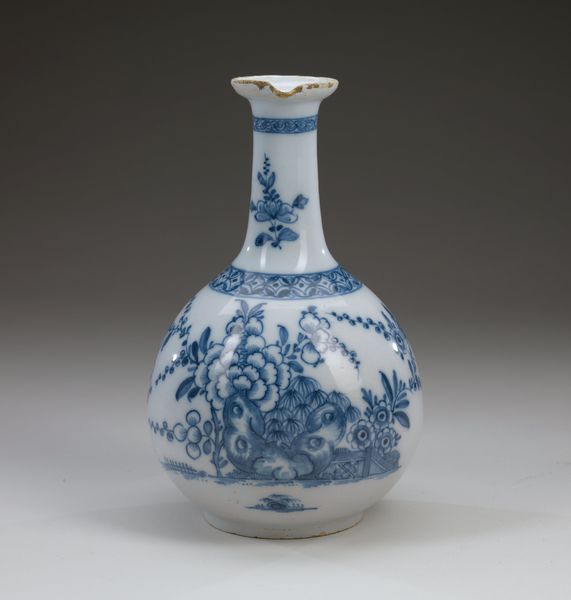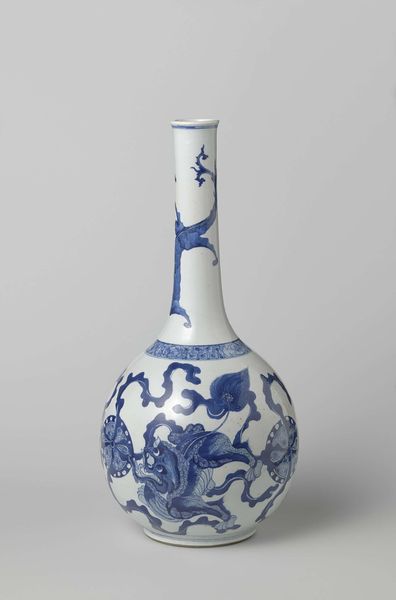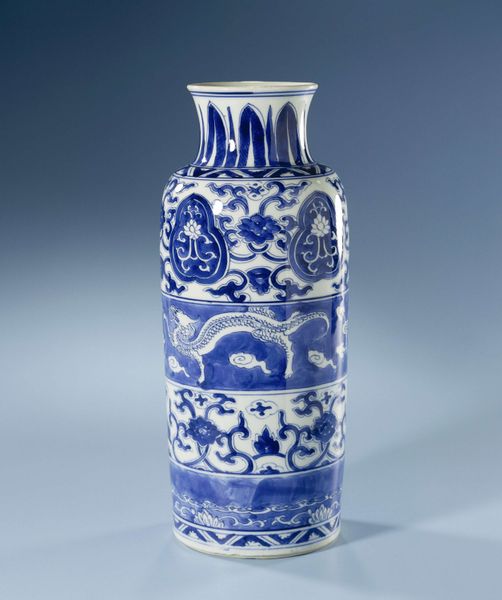
ceramic, porcelain
#
asian-art
#
ceramic
#
porcelain
#
ceramic
#
decorative-art
Dimensions: Height with lid: 6 3/4 in. (17.1 cm. )
Copyright: Public Domain
Curator: Standing before us is a delicate, "Small covered vase," a Chinese porcelain piece created sometime between 1766 and 1803. You'll find this treasure housed here at the Metropolitan Museum of Art. Editor: Well, hello there, little blue beauty! It's instantly charming. Like a burst of springtime squeezed into a petite ceramic container. There’s something both ancient and remarkably fresh about it, wouldn’t you agree? Curator: Indeed. During this period in China, porcelain production was intensely regulated and associated with imperial power and trade. This piece, although small, demonstrates the exquisite craftsmanship valued at the time. Blue and white porcelain was incredibly popular, particularly for export to Europe. Editor: Ah, so it's like a snapshot of global taste from centuries past. Makes you wonder about its journey – from the artisan's hands to some noble’s cabinet, across continents and oceans. Imagine the tales it could tell. The cobalt blues almost feel nautical, don't they? Like whispers of maritime voyages. Curator: Precisely. The patterns themselves tell a story. Notice the meticulously rendered floral motifs, and the formalized patterns near the neck, very much conforming to popular artistic conventions that reflect status and social hierarchy. These details are critical markers of the era, mirroring popular decorative themes, also underlining the significance of porcelain as an art form used as a form of global diplomatic exchange. Editor: Yes! Look how freely the floral designs burst across the body; each bloom almost animated, and notice that elegant lid...it’s just so satisfying. Curator: It exemplifies the artistry prized during the period. Understanding its original purpose – maybe holding spices, precious oils, or simply acting as a decorative item – illuminates the daily lives and rituals of people long gone, as does studying the object in situ within the museum as an evolving socio-historical phenomenon. Editor: In fact, holding history feels profound. Makes you think, doesn’t it, that beauty like this, crafted centuries ago, can still spark joy. I appreciate the thought that went into it, from the form to the meticulous brushstrokes; everything about it vibrates with vitality. Curator: I completely agree. Examining its creation and usage, considering cultural value and the market surrounding Chinese porcelains in the 18th Century is enriching, helping us recognize what artifacts like this embody beyond mere ornamentation. Editor: Exactly. Looking closely today has brought that historical echo to vivid life for me, hasn't it? Curator: Yes, absolutely.
Comments
No comments
Be the first to comment and join the conversation on the ultimate creative platform.
